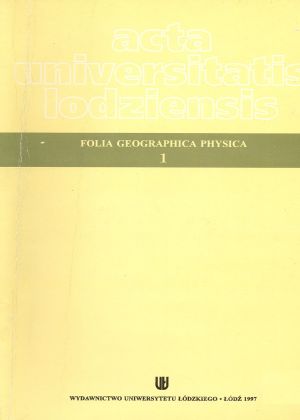Zagłębienia bezodpływowe w Polsce Środkowej i przydatność analizy ich wypełnień do interpretacji paleogeograficznych
Closed depressions in Central Poland and a significance of their fillings to the palaeogeograpidcal interpretation
Author(s): Halina KlatkowaSubject(s): Environmental Geography
Published by: Wydawnictwo Uniwersytetu Łódzkiego
Keywords: closed depression; Central Poland;
Summary/Abstract: Closed depressions in Central Poland are different origin. Two main groups are anthropogenic and natural forms. Many genetic types of the latter can be indentified, e.g.: l. Blowouts accompanying dunes and their complexes; 2. fluvial depressions, e.g. cut-off oxbow lakes at a various stage of decay; 3. karst collapse depressions, both young and largely buried by younger sediments; 4. suffosion steep-walled kettles and gentle hollows; 5. a significant and extensive group of Pleistocene forms in origin of which ice-sheet and permafrost are involved, thus depressions conditioned by: a. irregular glacial accumulation, b. uneven postglaciotectonic surface, c. dead ice melting out, and also from d. degradation of ground ice, e. Progressive melting of intrusive ice.The Pleistocene in age depressions commonly occur on till plains and also in the upper sections of dry valleys (Fig. l). Their significance consists, fust of all, in the usefulness of their ftllings to palaeogeographical reconstructions. It is the reason for which they were a subject of detailed analyses. Also, an attempt to correlate the results with the existing climatic curves of the Vistulian for Europe and Poland has been made. The interpretation has been based on the studied profiles from closed depressions, supported by palinologic documentation and radiocarbon dates. They are shown in Fig. 2, while the conclusions are presented below.During the Warta ice-sheet recession (150-140 ka BP) the relief of newly deposited tills and of fresh postglaciotectonic surfaces created local base levels in which deposits of wash and solifluction and afterwards mineral-organic sediments accumulated. There processes were retarded somewhat by very poor communities of treeless tundra that changed gradually to a park tundra and a boreal forest corresponding already to the interglacial succession. The Eemian landscape in Central Poland was aboundant in closed depressions. The primary lakes (gyttja, mineral-organic silts) were in the middle and upper Eem transformed into the raised bogs (peats, peat shales). At some places the process of organic sedimentation went 9.n during the Vistulian (Fig. 2 - Rudunki, Krzepczów). The type of sediments as well as the type of plant cover of the fust stadial of Vistulian (VS1) confum the opinion on an increase of humidity and a fall in temperature. The AmersfoortjBrmup warming, about 10000 years, with the mean temperature of July 15-l7°C and pine forest with larch, birch and spruce ~as followed by the second Vistulian stadial (VS2) with the mean values for July slighthy above 5°C. The succeeding interstadial, which in the vicinity of Łódź is called "Rudunki Interstadial" and is correlated with the Odderade, is the final forest episode of the early glacial that lasted for about 60 000 years. Simultanously, the organic accumulation in Rudunki and Krzepczów fmished (Fig. 2).For the Plenivistulian, until the Denekamp, no correlative deposits (naither organic nor mineral) have been found. Gnly the Krzepczów proffie displays the probable fluvial sedimentation. In the other promes the hiatus comprises all Plenivistulian warmings. Form the Denekamp on, a lot of data on deposits and numerous 14C and TL dates are available. The climatic deterioration enabled silts and fine-grained sediments with numerous syngenetic frost deformations to form on slopes and in depressions. The maximum of cold and aridity, with continuous permafrost, occurring in the Leszno and Poznań Phases corresponds with the gravel-stone horizon. It is correlated with the "Beuningen Steinsohle" and dated at 20000-18 000 years BP. During the ice-sheet recession up to the line of Pomeranian moraines thinly-laminated sands and their oversnow facies deposited. With the ice-sheet withdrawal up to the Gardno Phase, there was renewal of aeolian activity, which has an equivalent at the top of 'deposits of some depressions. The succession observed at the Rudunki site (Fig. 3) is a case in point. However, other facies, e.g. on interlluves or in river valleys, can exist.
Journal: Acta Universitatis Lodziensis. Folia Geographica Physica
- Issue Year: 1/1997
- Issue No: 1
- Page Range: 23-45
- Page Count: 23
- Language: Polish

